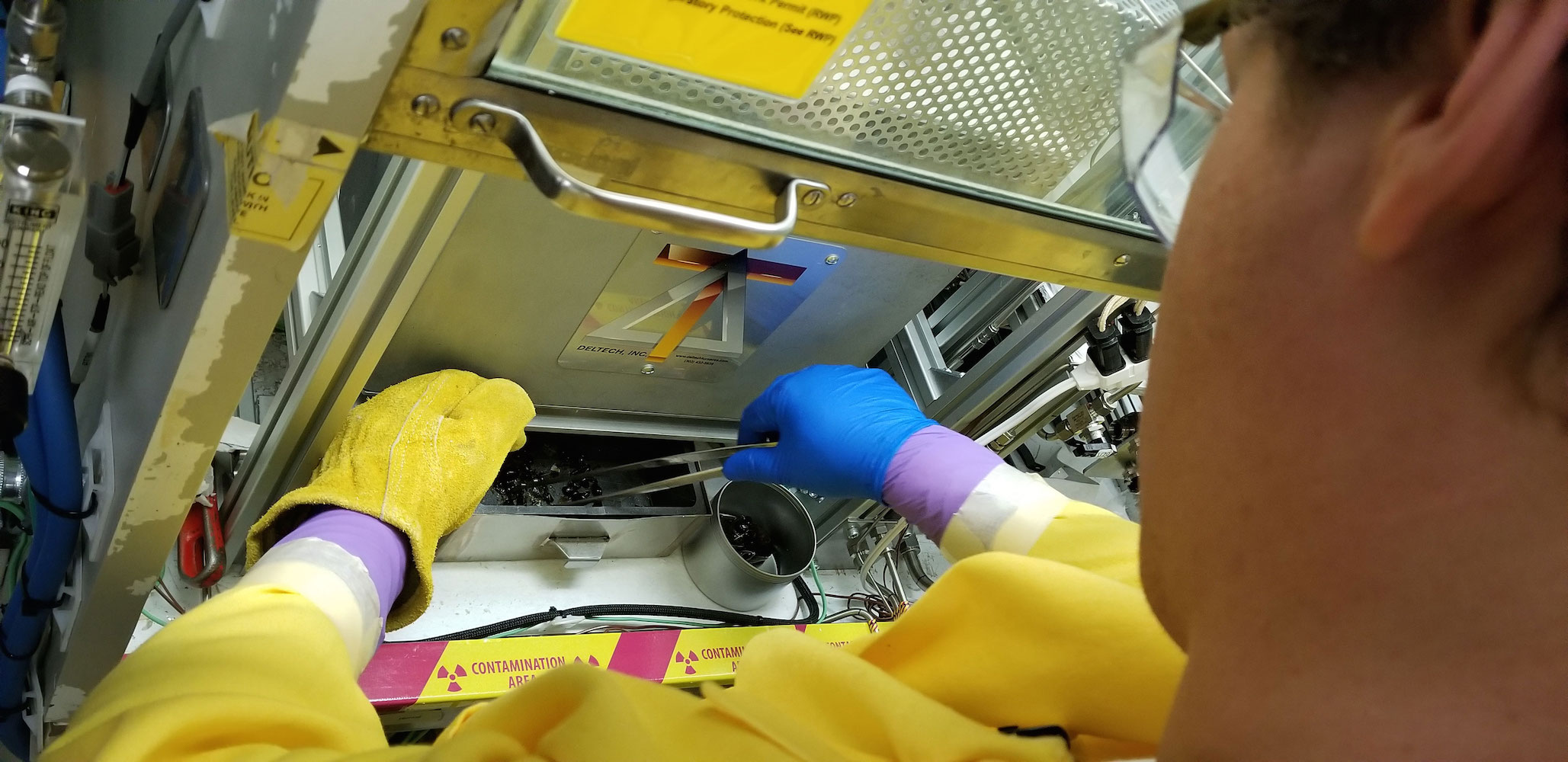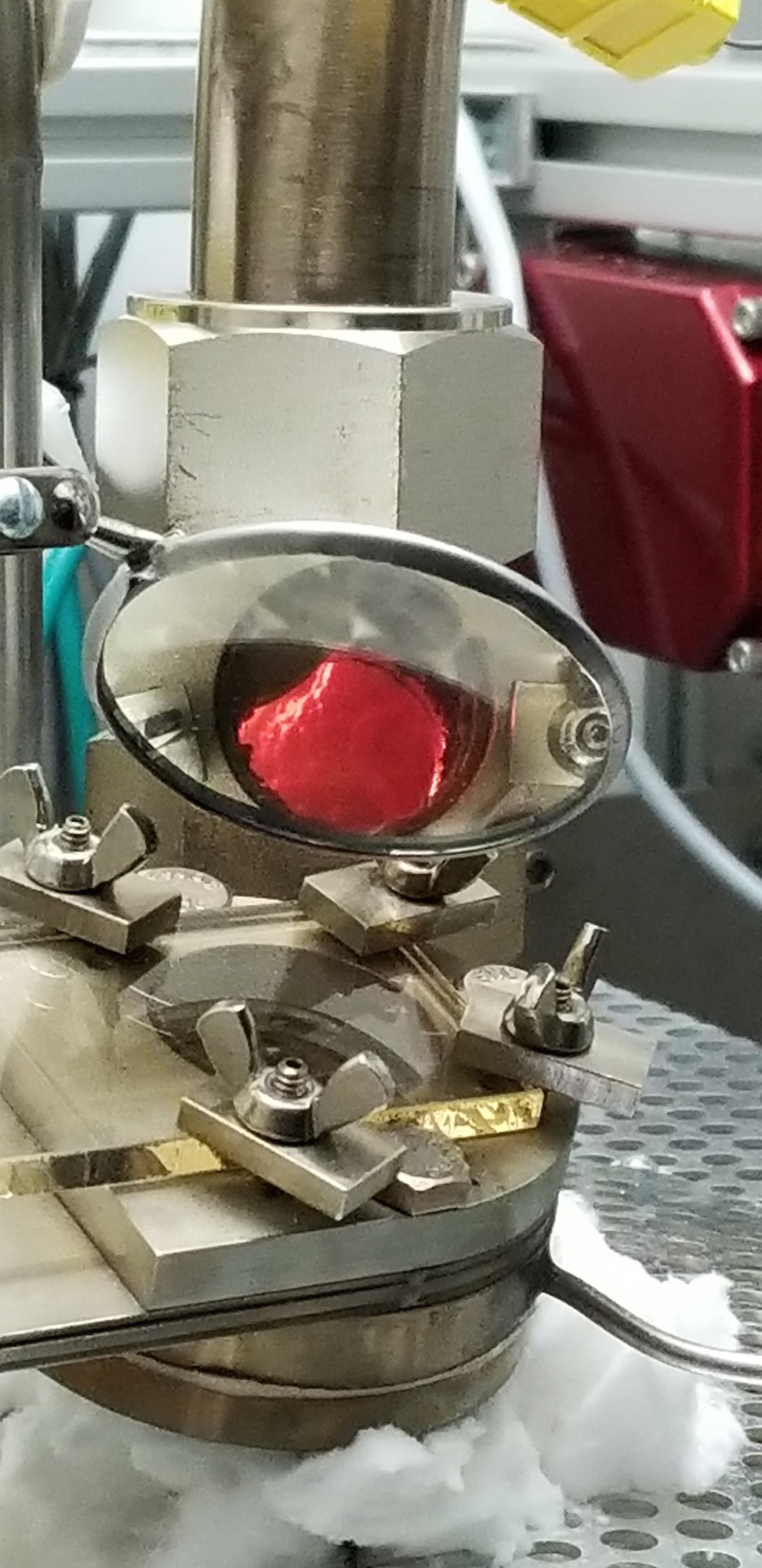Why Radioactive Waste Is Being Melted into Glass

Dangerous radioactive waste has been trapped inside solid glass in a first-of-its-kind demonstration, according to a statement from the Pacific Northwest National Laboratory (PNNL) in southeastern Washington.
In the demonstration, scientists at PNNL, a part of the U.S. Department of Energy (DOE), mixed low-activity radioactive waste — that is, waste with very small concentrations of radioactivity — with liquid glass, then let it harden into a durable, solid material. This so-called vitrification process immobilized the radioactive and chemical materials within the glass, the PNNL said.
"The radioactive elements are chemically bound as part of the glass material," Will Eaton, who led the test for PNNL, told Live Science. "And the glass material is a durable waste form that isolates the radioactivity from the environment for a very long time." [5 Everyday Things That Are Radioactive]
For the experiment, conducted in April, scientists from PNNL's Radiochemical Processing Laboratory took about 3 gallons (11 liters) of low-activity waste from a tank at the Hanford Site, a decommissioned nuclear production complex located next to PNNL in southeastern Washington. This small-scale demonstration is a key step forward in the goal of treating millions of gallons of hazardous waste that was generated from more than 40 years of plutonium production at Hanford, whose reactors produced plutonium for America's defense program, PNNL said.

"The experience from this test will help us as we prepare for full-scale operations," Albert Kruger, a glass scientist with the DOE's Office of River Protection (ORP), said in a statement. The ORP, which is responsible for the retrieval, treatment and disposal of the 56 million gallons (211 million liters) of chemical and radioactive waste stored in underground tanks at Hanford, did the test in partnership with PNNL and Washington River Protection Solutions, which manages Hanford tank operations.
To trap the hazardous liquid waste in glass, scientists mixed it with glass-forming materials, such as silica, and then slowly pumped the mixture into a melter that reached 2,100 degrees Fahrenheit (1,148 degrees Celsius). At the end of the test, the scientists had about 20 lbs. (9 kilograms) of glass.
"This successful test confirms the science and engineering approach," Eaton said in the statement. "Seeing actual Hanford low-activity waste being converted to glass is really exciting. It ties together 20 years of work from the design and construction of the Waste Treatment Plant to the research and testing that has supported that effort."
Sign up for the Live Science daily newsletter now
Get the world’s most fascinating discoveries delivered straight to your inbox.
If the glass breaks, as it did in the test, "then you have multiple pieces of glass," Eaton told Live Science in an email. "The waste components are chemically bound and are a part of the glass material. The dissolution of the glass over time (which happens very slowly) depends of surface area, so some minor cracking has a very small effect on leaching into the environment."
Later this year, researchers plan a second vitrification test on about 2 gallons (7.5 liters) of waste from a different tank at Hanford. However, this waste will test different filtration- and ion-exchange methods, the PNNL said.
Once this test is completed, the low-activity waste glass containers will be stored in the Integrated Disposal Facility at the Hanford Site.
Original article on Live Science.

Laura is the archaeology and Life's Little Mysteries editor at Live Science. She also reports on general science, including paleontology. Her work has appeared in The New York Times, Scholastic, Popular Science and Spectrum, a site on autism research. She has won multiple awards from the Society of Professional Journalists and the Washington Newspaper Publishers Association for her reporting at a weekly newspaper near Seattle. Laura holds a bachelor's degree in English literature and psychology from Washington University in St. Louis and a master's degree in science writing from NYU.









